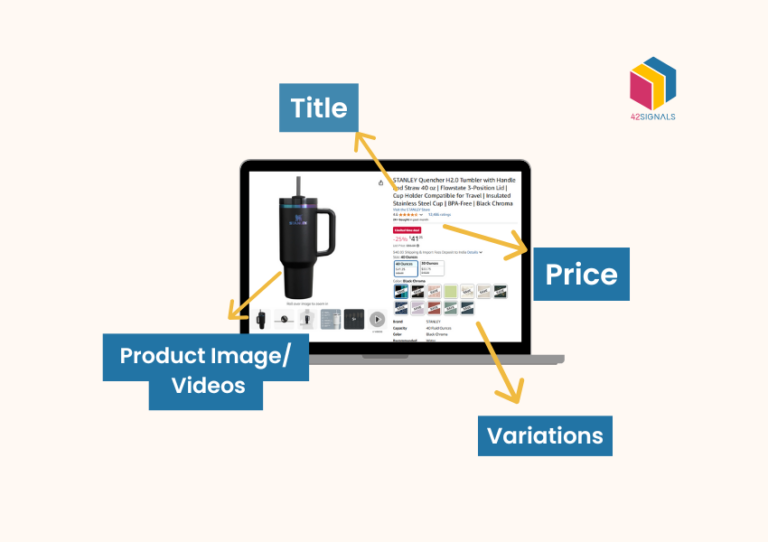What is the Meaning of Stock Availability?
Stock availability or product availability refers to the ability of a business to provide products as and when customers demand. It’s a key metric that significantly influences sales, as the absence of desired items can lead to lost sales and dissatisfied customers.
Consistent stocking is pivotal for maintaining customer satisfaction and loyalty. In today’s fast-paced market, customers expect quick and reliable access to products. A failure to meet these expectations can result in customers turning to competitors, thus impacting long-term retention and brand reputation.

Image Source: 42Signals – Stock Availability Analytics
Assessing Current Stock Availability Practices

Image Source: NetSuite
Evaluating Your Inventory Health
Regularly assessing inventory health involves analyzing stock levels, turnover rates, and ageing of stock. This evaluation helps in identifying any inefficiencies or potential issues in the supply chain that could affect the availability of stock
Identifying Gaps in Your Stock Management
This step involves scrutinizing the current stock management practices to pinpoint areas that need improvement. It could be related to ordering processes, supplier reliability, or even inventory forecasting accuracy.
Best Practices
How Do You Ensure Stock Availability?
Effective management of stocks involves a combination of accurate demand forecasting, efficient inventory management practices, and responsive replenishment strategies.
Implementing Robust Inventory Replenishment Systems
A robust inventory replenishment system ensures that stock levels are maintained at an optimal level, balancing the costs of overstocking against the risks of stockouts.
Developing an Efficient Reordering Process
This involves creating a streamlined process for reordering stock that minimizes delays and ensures timely restocking of products.
Just-In-Time Inventory Versus Safety Stock Strategies
Businesses must weigh the benefits of just-in-time inventory strategies, which reduce holding costs, against the security of safety stock strategies, which guard against unexpected demand spikes or supply delays.
Roadblocks & Ways to Improve
Building Strong Relationships with Suppliers
Cultivating strong, reliable relationships with suppliers is crucial for maintaining consistent stocks. This includes negotiating favorable terms and ensuring suppliers understand and align with your business needs.
Navigating Supply Chain Disruptions
Businesses must develop strategies to manage and mitigate the impact of unforeseen supply chain disruptions to maintain the availability of stock
Aligning Inventory with Market Demand
Aligning stock levels with market demand requires accurate demand forecasting, which involves analyzing market trends, sales history, and other relevant data.
Learning from Stockouts and Surpluses
Analyzing instances of stockouts and surpluses provides valuable insights that can inform future inventory strategies and prevent recurrence.

Image Source: Slimstock
Agile Adaptation to Changing Consumer Patterns
An agile approach to stock management allows businesses to quickly adapt to changing consumer behaviours and market trends, ensuring that the availability of stock aligns with current demands.
Conclusion
In conclusion, effectively managing the availability of stock is a complex but essential component of sales performance.
It requires constant attention and monitoring to ensure that the supply chain is managed effectively and demand is forecasted accurately. Implementing best practices helps iron out any processes or methods that are inefficient, utilizing only the tried and tested procedures.
42Signals helps businesses optimize their availability of stocks and provides granular insights into how to optimize product management.
For a free demo, contact us at sales@42signals.com
Frequently Asked Questions
What is the stock availability formula?
The stock availability formula is used to determine the degree to which a business has enough inventory to meet customer demand. While there isn’t a universally accepted single formula, stock availability can be assessed through various metrics such as service level and stock coverage. For example, stock coverage is calculated by dividing the available stock by the average product demand over a specific period, giving you an estimate of how long you can fulfil orders without restocking.
What are some stock availability analytics software?
Several software solutions specialize in stock availability analytics, providing insights into inventory trends and helping businesses optimize their stock levels. Here are a few examples:
1. DataWeave
Offers near real-time insights into stock availability, helping brands reduce latency periods between stock replenishment.
2. Techjockey
Lists various technical analysis software for stock trading in India, which includes features for managing order placement and assessing profitable investment strategies.
3. Liberated Stock Trader
Provides reviews of the best stock software for trading and technical analysis, which can be useful for stock availability analytics.
4. Wall Street Zen
Reviews stock analysis software and apps, detailing their features and limitations, which can aid in stock availability analysis.
5. Day Trading
Recommends the best stock analysis software and apps for traders, including those that offer technical analysis capabilities6.
Why is stock availability important?
Stock availability is important because it ensures that products are available for customers to purchase when they need them. It prevents stockouts, which can lead to lost sales, dissatisfied customers, and negative impacts on a company’s reputation.
What indicates good stock?
Good stock availability is indicated by having the right quantities of products in stock at the right time, without overstocking or understocking. It involves maintaining a balance between supply and demand, taking into account factors such as seasonality, product lifecycle, and customer behavior. A good stock availability ratio is generally considered to be around 95%, meaning that 95% of the time, the desired product is in stock when a customer wants it.







